|
Audrey Rochette mène une carrière parallèle de chorégraphe et d'interprète. Depuis sa sortie de l'École de Danse Contemporaine de Montréal, ses pièces Poros (2010), In Vitraux (2013), A Rift in the Wall (2013) et CAKE (2012 et 2014) ont été diffusées à Tangente, au Festival Phenomena, au Théâtre Mainline et à Zone Homa. En tant qu'interprète, Audrey collabore aux projets de Kondition Pluriel pour European/ Mobile/ Dome/ Lab et Enjeux. Elle a dansé pour Lucie Grégoire, Isabelle Boulanger, Rosie Contant, Bruno Dufort et Vanessa Bousquet.
Quel a été ton premier amour en danse? Meg Stuart. Je me rappelle du sentiment innommable que j'ai eu en regardant une captation sur VHS de sa performance solo soft wear au FIND... Ça a tout changé. Et, fait intéressant, les artistes qui ont influencé ma pratique et avec qui je sens un lien filial très puissant ont souvent travaillé soit directement avec elle ou avec des artistes qui ont gravité autour d'elle, comme Benoît Lachambre, sans que je ne le sache en premier lieu. Je trouve fascinants les liens indicibles qui se tissent entre des artistes, les pratiques qui se répondent, l'effet papillon que ça crée. C'est complètement abstrait et si concret en même temps. De quoi es-tu le plus fière? D'avoir suivi mon instinct. D'avoir réuni cette belle et folle équipe-là. D'avoir gardé ma tête de cochon malgré les obstacles quant à la faisabilité de la production de CAKE, même si parfois je me trouvais cinglée de continuer. D'y avoir cru, même si ce projet-là, sur papier, ne se peut pas d'un point de vue rationnel et n'entre dans aucune case. Quel est ton rapport à la critique? La critique est essentielle, l'art vivant étant éphémère. Ça reste une des preuves que l'œuvre a existé et de l'accueil qui lui a été réservé. La critique est à prendre avec un recul historique. Après, je trouve qu'aujourd'hui, on a perdu une part d'analyse au profit d'une promotion déguisée. La critique devrait pour moi avoir comme vocation première de positionner l'œuvre dans le paysage culturel. De quoi la danse a-t-elle besoin aujourd'hui? De ponts; à la fois entre les générations d'artistes, les individus qui les composent et leurs démarches, mais aussi entre ses différentes sphères et structures. La danse a besoin de solidarité. De courage et de fierté aussi. Parce qu'il faut continuer de défendre notre place dans le monde et éduquer les gens sur l'importance de la culture. Mais ça, on ne peut pas le faire en se regardant les pieds, tête baissée, chacun dans son coin. Je rêve d'un mouvement rassembleur où on cesse de protéger son patrimoine personnel au profit d'un plus grand bien commun, pour bâtir de nouvelles bases. Si on t'en donnait les moyens, quel fantasme de danse te paierais-tu? J'en ai plusieurs... Une masse de gens sur scène. 30 personnes au moins. Un centre d'artistes, un grand local bien fenêtré pour répéter, qui accueillerait des artistes locaux et internationaux. Qu'est-ce qui te motive à continuer à faire de l'art? L'urgence. D'agir sur le monde, de rencontrer l'autre à travers l'œuvre. L'art est l'une des rares manifestations de la libre-pensée, et ça, ça vaut très cher ces temps-ci. C'est encore le seul moyen que j'ai trouvé de vivre en paix avec l'absurdité du monde.
0 Comments
In September 2015, Montreal choreographer Gérard Reyes presented his solo The Principle of Pleasure at Théâtre La Chapelle. What follows are excerpts from a conversation Reyes and I had after the end of the show’s run.
SYLVAIN VERSTRICHT The section of The Principle of Pleasure where you danced for the person sitting on the chair was especially potent for me because in that moment we (the audience) became voyeurs, which oddly I didn’t feel we were before that point. A question that kept popping up in my mind during the show, which might sound absurd though I don’t think it actually is, was “Are we just spectators?” What is the role of the audience in The Principle of Pleasure? GÉRARD REYES From my experience as a seasoned concert dancer, I was sick of the conventional separation between audience and performer in a theatre, whereby the audience places primacy on the artist, yet the artist refuses to truly acknowledge the audience until the end of the show. There is a latent potential for exchange there! While I was conceiving The Principle of Pleasure, I was attending various performative events and spaces that were new to me – trans bars, female strip clubs, BDSM/fetish events, queer parties, vogue balls – each with its own code of conduct. These codes opened me up to consider a more equitable and fulfilling relationship between the ‘audience’ and ‘performer’ that is based on shared responsibility and communication. I propose a situation, encourage the audience to choose a role/perspective which speaks to them within it and hope that it will mutate over the course of the show: spectator, client, voyeur, performer, lover, dom, sub, friend, person, etc. There is another dimension to the audience. It is both inside (live participants) and outside the theatre (i.e. on social media such as Facebook, Instagram, Twitter and wherever else people decide to post photos and videos they take during the show). VERSTRICHT Speaking of Instagram, the image is a huge part of the show; there are two mirrors onstage, two photographers, one videographer, and – as you mentioned – audience members are also invited to take pictures with their cell phones. Why did you decide to set the performance in that environment? REYES Yes, image is a part of the show, but it is only the most superficial layer of the work. I use the elements you mentioned as well as others (mirrors, chairs, cameras, lighting, humans) to create images, define space and create proximity in order to allow for more intimate relationships to emerge between the audience and myself. That is where my greater interest lies. The reason I allow photos during the show is four-fold: 1) to give the audience the freedom to make choices; 2) to invite the audience to enter into a more active relationship with me and their surroundings; 3) to subvert conventions; and 4) to play with the idea of celebrity. I want to make the theatre a more inviting place to be, where people can relax and be themselves. One of my strategies is to allow the audience to do what they do all the time when they’re not in the theatre – talk, move around, stand, sit, use their phones. I want to address the audience as individuals and encourage them to express themselves. Hopefully some will come to the realization that behaviour is a choice. We have more control than we think over ourselves and any given space. Our individual choices help inform the choices of those around us. VERSTRICHT A big part of the way you also play with celebrity is by using Janet Jackson songs throughout the show, not to mention that she also provides you with the title for the piece. There have been quite a few works recently where queer and/or fem men have emulated pop stars (Beyonce is a particularly popular one these days). I’ve been wondering if it’s because, as a fem man in our culture, the highest level of celebrity one can seemingly aspire to is to be on RuPaul's Drag Race. It sort of makes me think about karaoke and how it’s an opportunity for people, if only for a moment, to sing as if they were their favourite pop star. It also plays into ball culture and how people who had really hard lives could act like divas for a day. This is a difficult question because it extends beyond you, but I was wondering if you could talk about what your personal reasons were for playing with the idea of celebrity... REYES We feel we “know” celebrities by their regular appearances on magazine covers and the banal details they share about their lives. But the physical and emotional distance they maintain from their fans actually gives them a power that makes them appear elusive, unique and desirable. I play with the cliché of this kind of celebrity at the beginning of my piece by presenting an extroverted character who is not embarrassed about displaying his body or showing self-appreciation or being filmed or photographed. But I want the external image of celebrity that opens my piece to fade to the background of the more multidimensional personas who the audience encounters once we are all on stage together. These personas I created embody the deeper layers of my sexuality, imagination, pleasure and desire that I have discovered and cultivated over the last few years. They are glamorous and physically attractive, nevertheless they are not shallow. Rather they are personable, generous and open to sharing their intimacy with whoever is willing to come along. VERSTRICHT Do you know Robert St-Amour? He's basically the best dance spectator. He goes to see a lot of shows and almost always writes a little something about them on Facebook after. After seeing your piece, he wrote “Les premiers moments sont inconfortables (pour moi), mais peu à peu, ‘j’apprivoise la bête’ ou je dirais plutôt que ‘la bête m’a appprivoisé’. La suite devient agréable et je suis presque déçu de reprendre ma place pour la fin de la présentation.” When I read that, I realized how important queer performance still is. Maybe sometimes, as queer people, we take it for granted. REYES I want to respond to St-Amour’s comment about my solo – that he was uncomfortable at first but then “the beast” (i.e. I) tamed him. It is indeed my intention to softly confront the audience but with the hope that they will overcome their fear. If they feel uncomfortable with my revealing costume or being on stage with me or in a moment when my eyes meet theirs, then the non-judgemental environment that I create is propitious for them to feel their discomfort and let go of it (if they so choose). Andréane Leclerc obtient son diplôme de l’École nationale de cirque en 2001. Concevant la contorsion comme une technique corporelle malléable capable de générer un monde de sensations et d’imageries mentales au-delà du spectaculaire, elle crée aujourd’hui des pièces expérimentales circassiennes ainsi que des performances conceptuelles (Di(x)parue, Cherepaka, Insuccube, Mange-moi, Corps sculptural). Elle continue son travail d’interprète auprès de chorégraphes et metteurs en scène tels que Dave St-Pierre, Angela Konrad et Peter James. En 2013, elle termine une maîtrise sur la dramaturgie de la prouesse au département de théâtre de l’Université du Québec à Montréal. La même année, elle met sur pied la compagnie Nadère arts vivants, dont elle assure la direction artistique. Question Chanti Wadge : Pourquoi bouges-tu? Parce que c’est la vie, parce que « pourquoi pas? » C’est une pulsion de vie. Parce que tout le monde bouge, puis c’est une valse avec l’atmosphère et l’univers. On fait partie de l’univers. Il n’y a rien qui ne bouge pas dans l’univers. Quelle est ta plus grande source d’inspiration en période de création? C’est tout, sauf ce que je suis en train de faire. Le vide. L’espace, l’entre-deux, la relation. C’est l’observation, donc tout ce qui se passe autour, ce que tu rencontres, ce qui te fait bouger. C’est la relation et comment tu te positionnes face à tout ce qui t’entoure et comment tu interagis avec ça ou comment les choses interagissent entre elles. Il n’y a pas une chose en particulier, c’est tout, ça peut être une roche à terre. Si elle te parle, tant mieux. Sinon, ça peut être quelqu’un, une conversation que tu as eue, ton rêve, une lecture, la façon dont tu vois ton foulard en te levant… Ça peut être tout ce qui t’entoure. Parce que, de toute façon, une création n’a pas un début et une fin. Qu’est-ce qui caractérise ton travail? C’est sûr que je viens du cirque, je travaille avec des gens de cirque beaucoup, mais je déteste particulièrement le spectaculaire et l’égo, donc j’essaie d’aller au-delà de ça. Aller au-delà de ça, ce n’est pas tant essayer de l’abolir… J’essaie de déconstruire la prouesse, le spectaculaire, l’égo, mais je suis plus dans une écriture scénique pour essayer de laisser parler une relation à l’espace et aux objets entre eux. Après ça, je pense que l’interprétation vient de l’intérieur, le feeling de l’interprète, ce qu’il peut vivre ou a envie de vivre à ce moment-là. Je pense qu’il va toujours y avoir une certaine logique là-dedans qui en ressort. Des commentaires (bons ou mauvais) qu’on a faits sur ton travail, lequel est resté avec toi? Pour La Putain de Babylone, j’ai eu des commentaires comme quoi que c’était vraiment dégradant pour la femme de voir encore des femmes nues, jolies. C’est drôle, je pense que j’ai tellement une démarche féministe et j’ai tellement été proche du Studio 303. Il y a Nathalie Claude avec qui j’ai travaillé… La scène féministe m’appelle vraiment beaucoup. C’est là que j’ai fait mes premiers pas de création. Pour moi, la femme, c’est une femme forte. Ce n’est pas tant son enveloppe, mais plus comment une femme habite son corps. Après ça, que les interprètes aient des beaux corps, je me dis, « Tant mieux, câlisse! Sommes-nous toujours obligés d’avoir des corps pas beaux? » Non, au contraire, un corps beau, c’est le fun aussi de pouvoir le manipuler, de le sortir de ses zones et de ne pas juste l’utiliser. Comme je travaille beaucoup l’écriture scénique, les corps deviennent à quelque part des objets, mais l’objet de la représentation, un objet au soutien d’une œuvre, au sein d’un propos. D’être capable de le manipuler, d’utiliser ton corps pour pouvoir soutenir quelque chose qui est au-delà de toi… Il y a quelque chose qui doit juste te transpercer de l’imagerie mentale que tu supportes pour pouvoir le donner au spectateur. Le spectateur prend ça et il se recrée quelque chose. Ton corps est un véhicule. Donc, si je vois le corps comme véhicule, c’est sûr qu’à quelque part, c’est un corps objet, mais ce n’est pas un corps objet soumis ou dégradé. Je ne le place pas dans une zone comme ça. En fait, s’il-vous-plaît, dites-moi le si je suis là-dedans, mais je ne pense pas. Au contraire, je pense que j’essaie d’être empowered. Dans Mange-moi, on parle d’empowerment à travers la sexualisation des corps en scène. J’ai été dans le burlesque, dans la performance, j’ai essayé de mettre le corps de contorsion à nu, justement pour sortir la contorsion de moi, pour me réapproprier mon corps, pour sortir de cet objet sexuel que le spectateur a le goût de voir, de renverser la relation avec le spectateur, puis d’être en pleine possession de ce que moi j’ai envie de dire et que j’essaie d’offrir au public. Je fais, « Oui, je suis nue, et qu’est-ce que je peux suggérer là-dedans? Toi, tu t’attends à quoi? » Souvent, la première fois, les gens trouvent la monstruosité hallucinante, de voir les os et les côtes sortir… Dans le fond, j’espère juste que je donne le bon message dans ce que je fais. Ça a été un commentaire qui m’a bien marqué. J’ai trouvé que ça a été un jugement un peu trop facile, un peu trop vite, avant d’aller voir plus loin. En même temps, les gens peuvent bien penser ce qu’ils veulent… Ça va juste m’aider à être un peu plus convaincue de comment j’aborde les corps. Après ça, on a le corps qu’on a… Ça a été un de mes plus grands complexes d’avoir des seins, en cirque, depuis que je suis petite. Qu’est-ce que tu veux que j’y fasse? S’il y a une chose que j’ai bien comprise, c’est que dans une contorsion hyper traditionnelle, c’était dans la façon que tu donnes tout en cirque, que tu n’as aucune conscience de ce que tu es en train de mettre en scène. Tu fais juste suivre un peu la tradition et tout donner ce que tu es capable de faire. Non… Gardes-en un peu pour toi et donnes-en un peu moins et essaie d’emmener le spectateur ailleurs que ce que lui pense ou ce que lui a hâte de voir justement, contourne ça… « C’est à ça que tu t’attendais? Bien, moi, je t’emmène ailleurs. » De quoi es-tu le plus fière? C’est quelque chose que j’essaie de garder enfoui en moi. Je suis fière, je suis bien avec ce que je fais, mais j’aime et je déteste toutes mes pièces. C’est une relation amour-haine. De quoi suis-je le plus fière? Je pense d’avoir réussi ma maîtrise, d’avoir passé à travers. Que serais-tu contente de ne plus jamais voir dans un spectacle de danse? De la censure. J’espère juste que les gens ne se censurent pas et qu’ils vont juste aller au bout de ce qu’ils ont le besoin et le goût de faire. De quoi la danse a-t-elle besoin aujourd’hui? De plus de soutien et de reconnaissance, d’un public plus large. Je trouve ça plate que des fois ça reste trop entre nous. Ou les gens ont une idée que la danse, c’est juste pour les initiés, tandis que c’est tellement pas ça, surtout au Québec. Quel est ton rapport à la critique? En cirque, au Québec, j’aimerais ça que les critiques aient plus de chien, qu’ils disent ce qu’ils pensent vraiment, qu’ils aient plus de sens critique justement, qu’ils aillent voir un peu au-delà de ce qui est toujours présenté. En cirque, je trouve la critique trop gentille. Le cirque est tellement spectaculaire, tellement « grand public »… Le cirque est assez large à Montréal. C’est correct, sauf qu’ils restent beaucoup dans une zone très sécure, qu’ils ont peur de s’aventurer et je trouve que la critique reste aussi beaucoup là-dedans. Je pense qu’on a peur d’aller plus en profondeur, autant au niveau des spectacles que des critiques. C’est dommage parce que je trouve que la critique est là pour faire réfléchir, pour amener un autre point de vue. Je suis écœurée aussi des critiques qui font juste relater ce que les artistes disent dans leur dossier de presse. Ce n’est pas tout le monde, on s’entend, mais j’aime les critiques aussi qui n’ont pas peur, qui ont vraiment une voix et un goût personnels, qu’on ait une certaine relation… Il y en a beaucoup qu’ils l’ont, mais pas tous. Encore une fois, j’aimerais mieux qu’il y en ait des plus fortes par rapport au cirque et qu’ils amènent une réflexion, d’autres points de vue. C’est ça un peu leur rôle aussi, non? Ce n’est pas encore de dire, « c’est bon/ce n’est pas bon » et de juger. Une critique, ça va plus loin; ça va mettre en lumière, ça va questionner des choses, ça vient relater. C’est quand même un œil pour le spectateur, mais c’est vraiment une source de réflexion aussi et de débat, puis je pense qu’encore une fois, au Québec, on a peur de débattre des idées. Le rôle du critique est extrêmement important. Qu’est-ce qui te motive à continuer de faire de l’art? Parce que j’y crois. La Putain de Babylone
8-12 septembre à 20h Mange-moi 15-17 septembre à 20h Théâtre La Chapelle www.lachapelle.org 514.843.7738 Billets : 29$ / 30 ans et moins : 25$ À propos de la photographe : Meryem Yildiz est née à Montréal. En plus de prendre des photos, elle écrit et elle traduit. www.meryemyildiz.com
Une vidéo projetée sur une scène légèrement inclinée vers le public offre un environnement immersif à l’interprète Miriah Brennan. Cet espace est aussi fluide qu’un rêve, impression qui est sûrement accentuée par la noirceur nécessaire pour la projection.
Catherine Gaudet et Virginie Brunelle ont toutes deux collaboré à la chorégraphie. Leur travail est bien intégré. Il est pratiquement impossible de distinguer l’apport de l’une ou de l’autre, entre autres parce qu’il est assez difficile de s’imaginer à quoi pourrait ressembler un solo de Brunelle, elle qui s’est surtout fait remarquer pour ses duos. Aussi, les deux chorégraphes ont un style particulièrement violent, qualité que l’on retrouve encore ici. La performance plus théâtrale (qu’on attribuerait à Gaudet) est toutefois un peu perdue dans la pénombre du projecteur qui frappe la tête de haut plutôt que de face. La force d’Obsolescence programmée n’est pas dans la danse ou même dans les visuels de Bortuzzo, mais dans la rencontre et l’interaction du corps et de l’image, un espace mince et malléable comme une peau. Autrement, les différentes composantes du spectacle ne créent pas un tout autant qu’elles semblent être empilées dans l’espoir de stimuler une multitude de sens. En demeure un spectacle qui pourrait se démarquer si seulement il capitalisait sur l'onirisme qu'il trouve dans ses moments plus abstraits. 18-22 novembre à 20h Théâtre La Chapelle www.lachapelle.org 514.843.7738 Billets : 29$ / Étudiants : 25$ Prismes de Benoît Lachambre du 2 au 6 décembre (Danse Danse)
Avec l’aide de l’éclairagiste Lucie Bazzo, Lachambre explore à fond les jeux de lumières et de couleurs avec ce spectacle des plus stimulants visuellement. Dans sa tête & Six pieds sur terre de Maïgwenn Desbois du 20 au 21 décembre (Tangente) Avec ses pièces ludiques où elle gigue avec des interprètes ayant le syndrome de Williams et d’Asperger, Desbois nous reflète avec humour notre société capacitiste. Klumzy de Nicolas Cantin du 25 au 27 mars (Usine C) Cantin s’enfonce de plus en plus dans l’antithéâtre avec ce spectacle marquant, une suggestion de biographie de l’interprète Ashlea Watkins où la mise-en-scène de Cantin prend tout autant de place. CEUX DONT LA DERNIÈRE CRÉATION ME DONNENT RAISON D’ESPÉRER Bath House & Cherepaka d’Andréane Leclerc du 21 au 24 octobre (Tangente) Leclerc se sert du corps contorsionniste pour aborder des questions philosophiques et féministes dans des pièces sensorielles. Tête-à-tête de Stéphane Gladyszewski du 8 au 16 novembre (Agora de la danse) Gladyszewski utilise la technologie mieux que quiconque dans le monde de la danse. Pour Tête-à-tête, pièce pour un seul spectateur à la fois, ce dernier doit insérer son visage dans un masque pour voir la performance. Intrigant. Confession publique de Mélanie Demers du 8 au 11 avril (Usine C) Après avoir clos un cycle de pièces de groupe l’an dernier avec MAYDAY remix, Demers plonge dans le vide avec son nouveau spectacle, un solo. Peu de raisons de s’inquiéter; la chorégraphe, drôle et intelligente, ne rate jamais son atterrissage. Wolf songs for Lambs de Frédéric Tavernini du 14 au 18 avril (La Chapelle) Avec son installation chorégraphique Le Tératome, simple et efficace, Tavernini avait créé un univers cliniquement froid et fascinant. Il nous revient avec une autre installation, cette fois explorant l’imaginaire de l’enfance. http://www.dansedanse.ca/ http://tangente.qc.ca/ http://www.usine-c.com/ http://agoradanse.com/ http://lachapelle.org/ 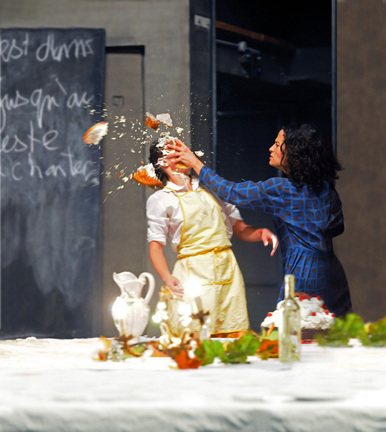 Salves, photo by Jean-Pierre Maurin Salves, photo by Jean-Pierre Maurin Salves, Maguy Marin (Danse Danse) Septembre 26-28 Because last time Marin was in town, it was back in 2007 with Umwelt, which still holds as one of the best shows performed in Montreal this past decade. Prismes, Benoît Lachambre (L’Agora de la danse) October 16-19 Because Lachambre made quite the comeback last year with Snakeskins, his best show in years. Henri Michaux: Mouvements + Gymnopédies, Marie Chouinard (Danse Danse) October 31-November 2 Because Chouinard’s last show, LE NOMBRE D’OR (LIVE), is the one that has had the biggest impact on me since performer Carole Prieur first translated Henri Michaux’s drawings into dance back in 2005. We can only imagine what it will be like when all the dancers of the company will follow in her footsteps. Cuire Le Pain De Nos Corps, Sarah Dell’ava (Tangente) November 21-24 Because Dell’ava is probably the most intelligent mover in Montreal. LA VALEUR DES CHOSES, Jacques Poulin-Denis (Lachapelle) January 21-25 Because Poulin-Denis manages to expose the absurdity of human life while remaining funny and touching. The Nutcracker, Maria Kefirova (Tangente) January 30-February 2 Because Kefirova is one of the few choreographers in Montreal who knows how to deal with video in live performance. The adaptation project, Michael Trent (L’Agora de la danse) February 12-14 Because the last time Trent was in Montreal, he surprised everyone by being as conceptual as he was playful. Reviens Vers Moi Le Ventre En Premier, Annie Gagnon (Tangente) February 27-March 2 Because she’s one of the few choreographers in Montreal who’s not afraid to be serious. Mayday remix, Mélanie Demers (Usine C) March 12-14 Because, with just a few works, Demers has managed to establish herself as one of the most consistently good dancemakers in Montreal and it will be a treat to see her revisit her past works before moving on to the next artistic stage in her career. Mange-Moi, Andréane Leclerc (Tangente) March 20-23 Because Leclerc’s contortionism isn’t just a circus trick; it’s a philosophy that allows her to approach and explore space differently. http://dansedanse.ca/DDA_1314/en/ http://www.agoradanse.com/en http://tangente.qc.ca/ http://lachapelle.org/ http://www.usine-c.com/ 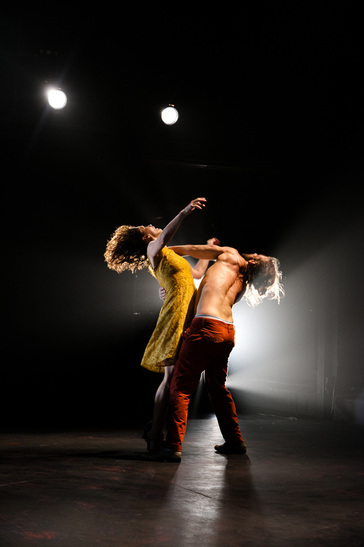 Ta douleur, photo by Nicolas Ruel Ta douleur, photo by Nicolas Ruel The problem with pain is that one’s is always felt, whereas that of others is merely seen. What I’m saying is: one’s most minimal pain is more felt than the most extreme suffering of others. It might be for this reason that director Brigitte Haentjens chose the second person for the title of the duet she choreographed for Anne Le Beau and Francis Ducharme: Ta douleur. Your pain… never as great as mine. It’s the kind of detachment that each performer exhibits when confronted with the other’s suffering. The same could be said for this spectator. To be fair, Ta douleur gains self-awareness in its most humorous moments. Early in the show, after feeding into the melodramatic acting that constitutes the bulk of the performance, Le Beau and Ducharme purge all the platitudes we tell each other: “C’est pas facile, hein?” For the most part however, Haentjens is interested in when the body is the object of such pain that it becomes unintelligible. The victim of an overabundance of emotion, it merely cries, trembles, convulses. It is but the physical appearance of pain, little more than a blocking of emotional states. This is only enhanced by the decision to constantly fade in and out of black. This fragmentation prevents Haentjens from finding the links that would have made Ta douleur more choreographic. It is as though, without words, the woman who is more used to directing plays did not know how to make one scene flow into the next. Despite its minimal story and movement, the pain explored here is concrete. Too concrete. It is uniform in its capitalization on pain as and from violence. This might be an effort to make it theatrical, but it only ends up undermining itself by constantly striking the same loud note. In the end, Ta douleur plays like other people’s pain: overly dramatic, blown out of proportion, easy to disregard. Ta douleur 18-22 & 25-29 September at 8pm Théâtre La Chapelle lachapelle.org 514.843.7738 Tickets: 30$ / Students: 25$ 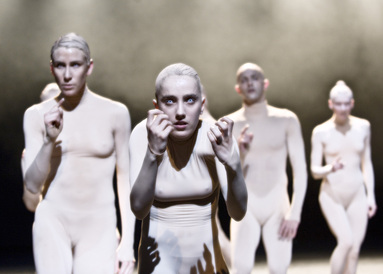 Sharon Eyal & Gai Bachar’s Corps de Walk, photo by Erik Berg Sharon Eyal & Gai Bachar’s Corps de Walk, photo by Erik Berg Benoît Lachambre’s Snakeskins: because you can only accuse Lachambre of being so hit-or-miss due to his uncompromising commitment to his artistic pursuits… and he’s due for a hit. (October 10-12, Usine C) Nicolas Cantin’s Grand singe: because nobody else manages to pack as much punch by doing so little. (October 30-November 1, Usine C) Brian Brooks’s Big City & Motor: because Brooks explores concepts that only push his choreography further into the physical world, turning the human body into little more than a machine. (November 22-25, Tangente) Karine Denault’s PLEASURE DOME: because we haven’t seen her work since 2007, when she presented the intimate Not I & Others using only half of the small Tangente space, dancing with humility, as though the line between performer and spectator simply hinged on a matter of perspective. (February 6-9, Agora de la danse) Pieter Ampe & Guilherme Garrido’s Still Standing You: because Ampe & Garrido have created one of the most compelling shows of the past few years, a dense study of masculinity and friendship covered with a thick layer of Jackass trash. (February 12-16, La Chapelle) Sharon Eyal & Gai Bachar’s Corps de Walk: because it’s the first time we get to see a work by Eyal in six years, when she blew us away with a non-stop human parade that was decidedly contemporary in its transnationalism and use of everyday movements like talking on cell phones. (February 28-March 2, Danse Danse) Mélanie Demers’s Goodbye: because, much like David Lynch did with Inland Empire, Demers demonstrated that an artist doesn’t need to instill suspension of disbelief in its audience to work, that dance can be powerful as dance just as film can be powerful as film. (March 20-22, Usine C) Maïgwenn Desbois’s Six pieds sur terre: because Desbois demonstrated that one doesn’t need to sacrifice art in order to make integrated dance. (March 21-24, Tangente) Yaëlle & Noémie Azoulay’s Haute Tension: because Yaëlle Azoulay came up with the most exclamative piece ever presented at the Biennales de Gigue Contemporaine. (March 28-30, Tangente) Dorian Nuskind-Oder’s Pale Water: because with simple means Nuskind-Oder manages to create everyday magic. (May 10-12, Tangente) |
Sylvain Verstricht
has an MA in Film Studies and works in contemporary dance. His fiction has appeared in Headlight Anthology, Cactus Heart, and Birkensnake. s.verstricht [at] gmail [dot] com Categories
All
|
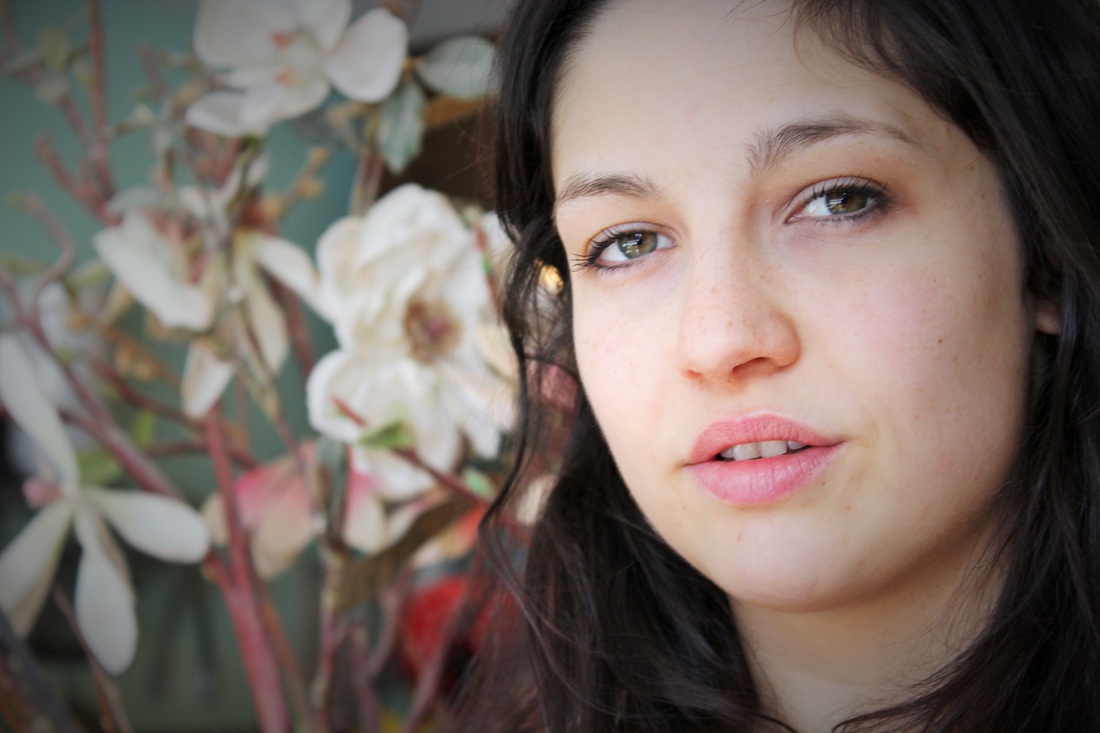
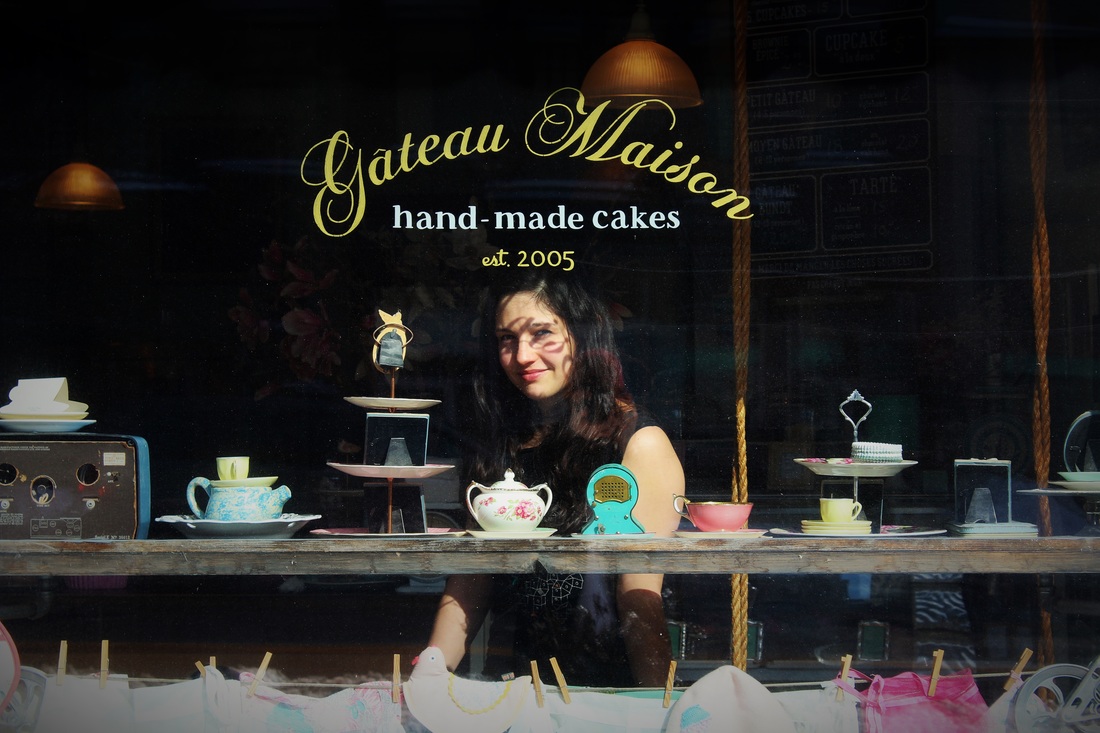
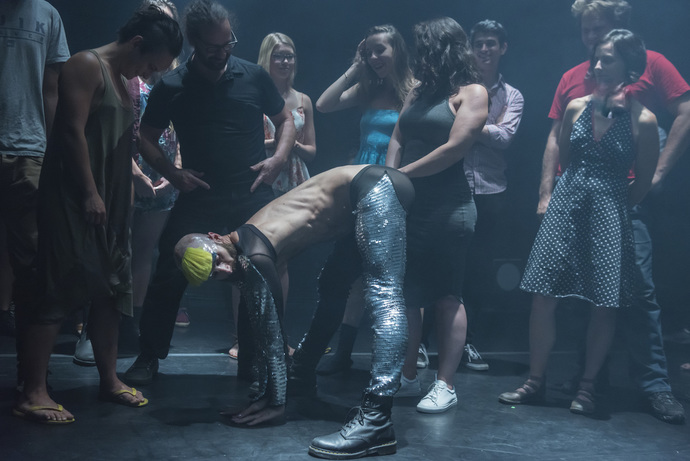
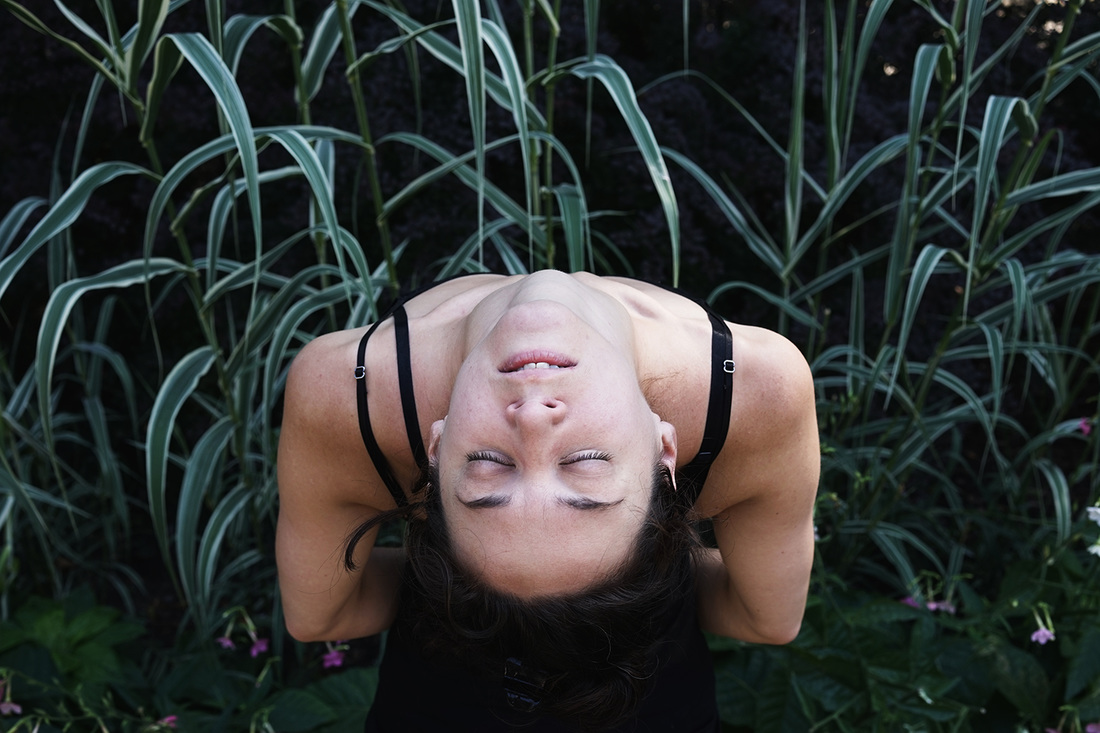
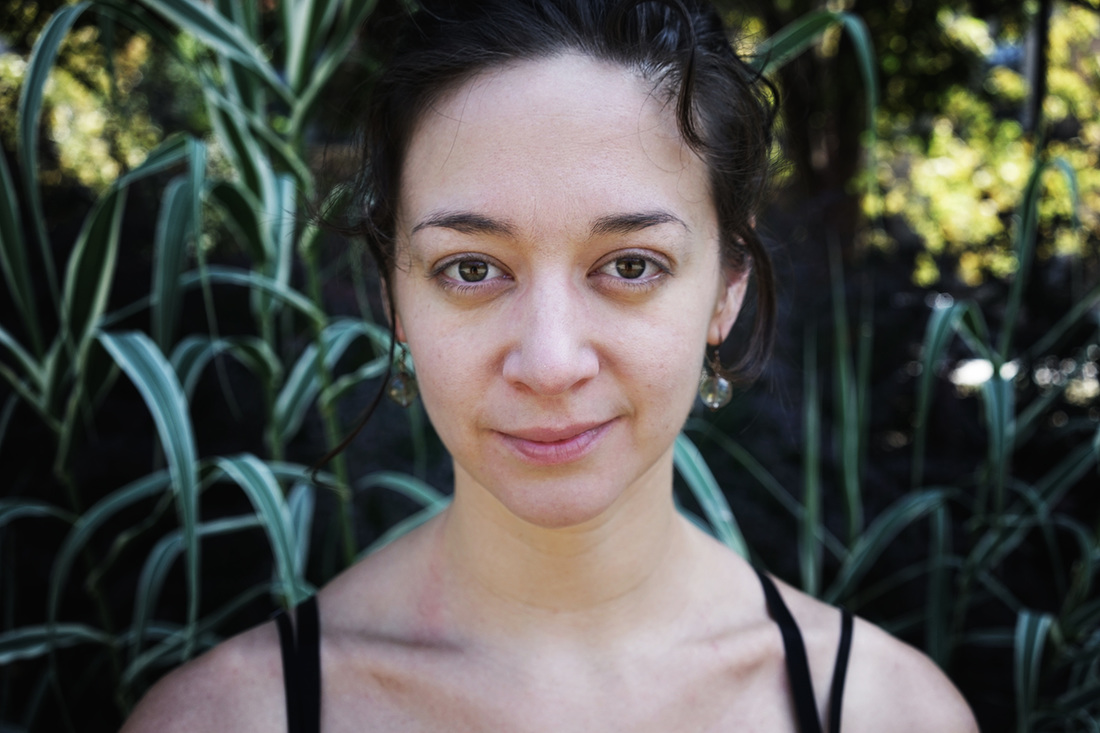
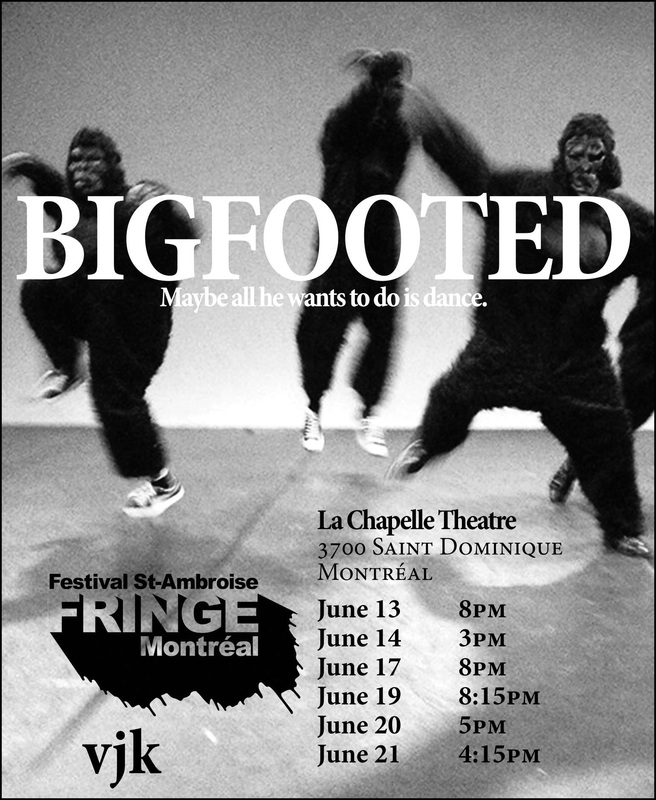
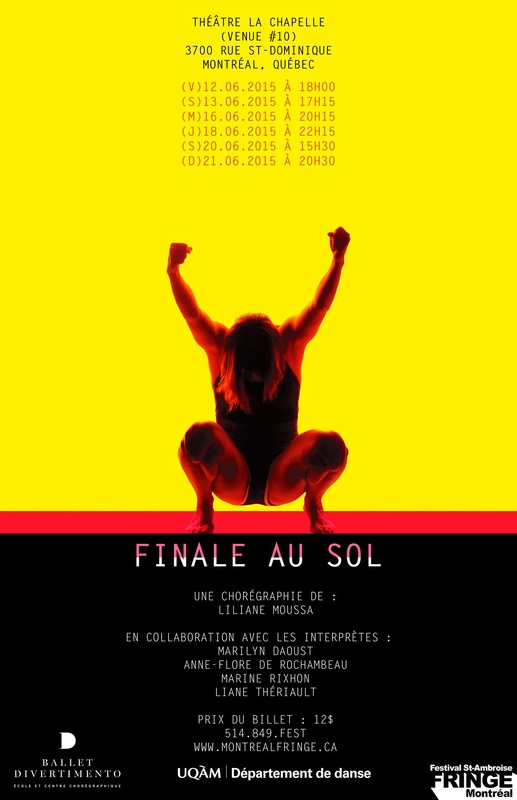
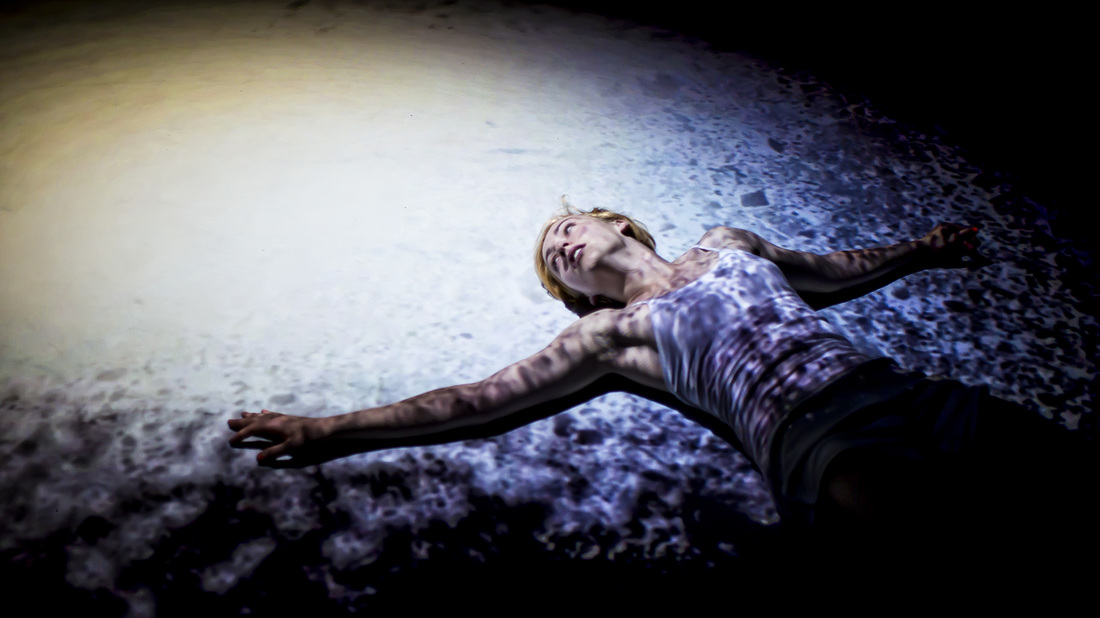

 RSS Feed
RSS Feed